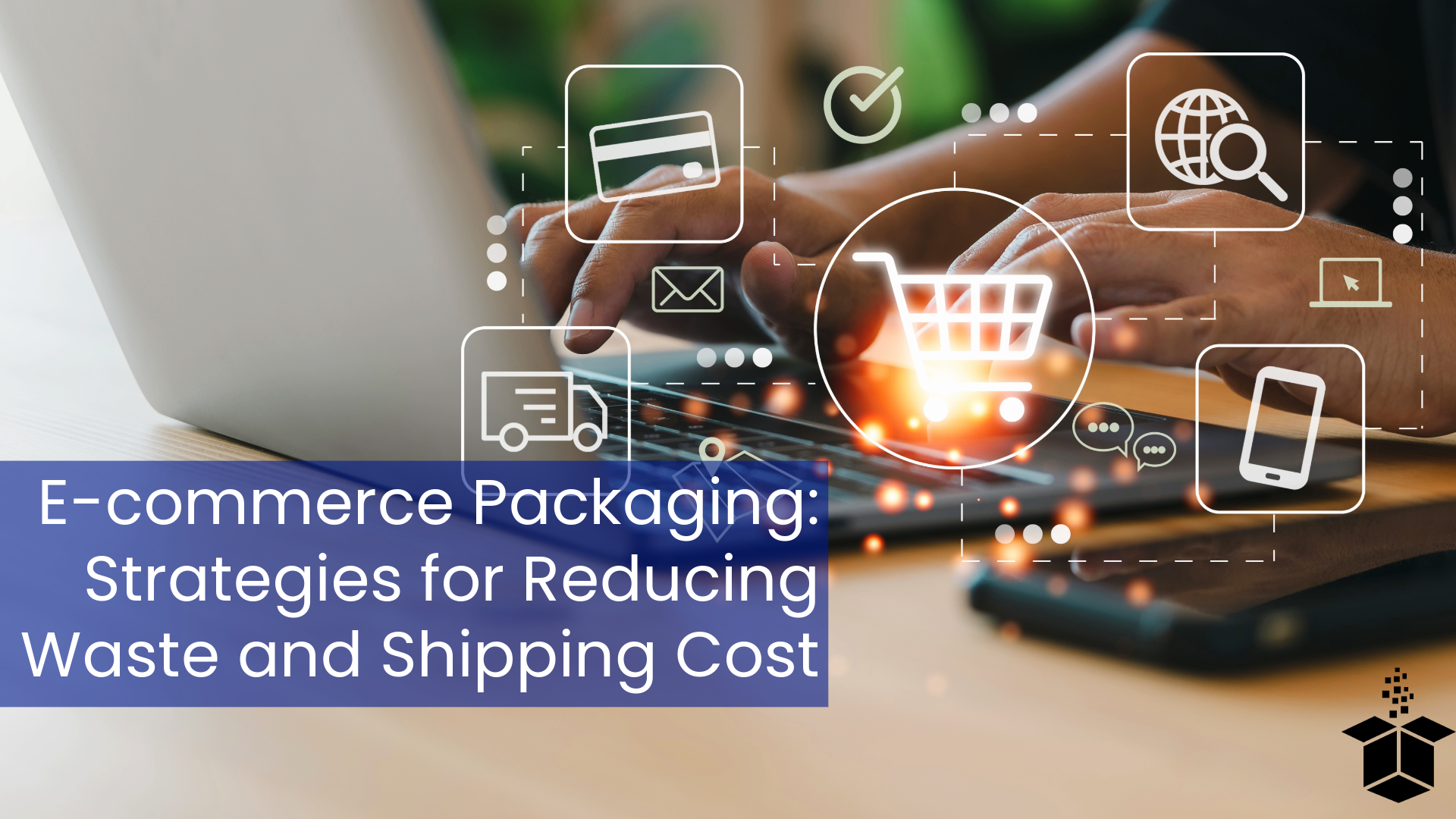E-commerce Packaging: Strategies for Reducing Waste and Shipping Cost
Packaging in e-commerce is not just about delivering products; it's about creating an experience while being mindful of environmental impact and cost efficiency. With many businesses selling their products online, it is important to consider how your products are getting to customers and how to do it cost-effectively. As consumers are becoming more environmentally conscious, it is also important to consider minimizing waste when it comes to shipping products. Here are some effective strategies for reducing waste and shipping costs in e-commerce packaging:
Right-sizing Packaging:
One of the most straightforward ways to minimize waste and cut shipping costs is to use appropriately sized packaging. Have you ever received a package that comes in a big box but once you open it, the actual product is only a fourth of the size of the box and it’s filled with air pillows or some other kind of filler? It seems excessive, unnecessary, and wasteful.
So, avoid using oversized boxes for small items as this leads to wasted space and unnecessary material usage. Invest in packaging solutions, like custom packaging, that offer a variety of sizes to accommodate different product dimensions, ensuring a snug fit without excess packaging material.
Lightweight Materials:
Opt for lightweight packaging materials that provide adequate protection without adding unnecessary bulk. Materials like corrugated cardboard, recycled paper, and biodegradable plastics offer durability while minimizing environmental impact. By reducing the weight of your packages, you can lower shipping costs and decrease your carbon footprint. This is not only a win for your business and the environment, but the customer as well as they now don’t have to deal with excess packaging.
Eco-Friendly Options:
Embrace eco-friendly packaging alternatives such as compostable mailers, recycled cardboard boxes, and biodegradable packing peanuts. These sustainable materials help reduce landfill waste and demonstrate your commitment to the environment. Additionally, eco-friendly packaging resonates with environmentally conscious consumers, enhancing your brand reputation and customer loyalty.
Minimalist Design:
Simplify packaging design to eliminate excess layers, inserts, and embellishments where possible without compromising safety and brand identity. Some industries have regulations that require specific layering, so be sure you are not ignoring regulations.
Adopting a minimalist approach can help focus on functionality and aesthetics while reducing material usage. Streamline packaging elements such as tape, labels, and stickers to create a clean, cohesive look that reflects your brand identity.
Reusable Packaging:
Explore the concept of reusable packaging solutions that encourage customers to repurpose or return packaging materials. Implement initiatives like incentivized returns for reusable packaging to promote sustainability and reduce waste. Other options could be reusable product containers as seen more frequently in the cosmetic industry. By extending the lifecycle of packaging materials, you can minimize environmental impact and enhance customer engagement.
Collaborative Supply Chain:
Foster partnerships with suppliers and logistics providers to optimize packaging solutions and reduce shipping costs. Collaborate on packaging design, materials sourcing, and transportation logistics to identify opportunities for efficiency improvements and cost savings. By working together across the supply chain, you can implement holistic solutions that benefit both the environment and your bottom line.
Merchant Boxes can help you streamline your packaging and minimize costs as we have a network of suppliers that can create your perfect packaging in a cost-effective way.
Data-Driven Optimization:
Leverage data analytics and insights to continuously refine your packaging strategies. Monitor packaging waste, shipping costs, and customer feedback to identify areas for improvement and innovation. Utilize predictive analytics to forecast demand and optimize inventory management, reducing the need for excessive packaging materials and minimizing shipping inefficiencies.
Conclusion
E-commerce packaging presents a unique opportunity for businesses to innovate and prioritize sustainability while enhancing cost efficiency. By implementing strategies such as right-sizing packaging, embracing eco-friendly materials, and fostering collaborative partnerships, businesses can reduce waste, lower shipping costs, and differentiate themselves in the competitive e-commerce landscape.
Ready to make your e-commerce packaging more cost-efficient and less wasteful?
Merchant Boxes has a team of packaging experts to help your business thrive in the packaging space.




